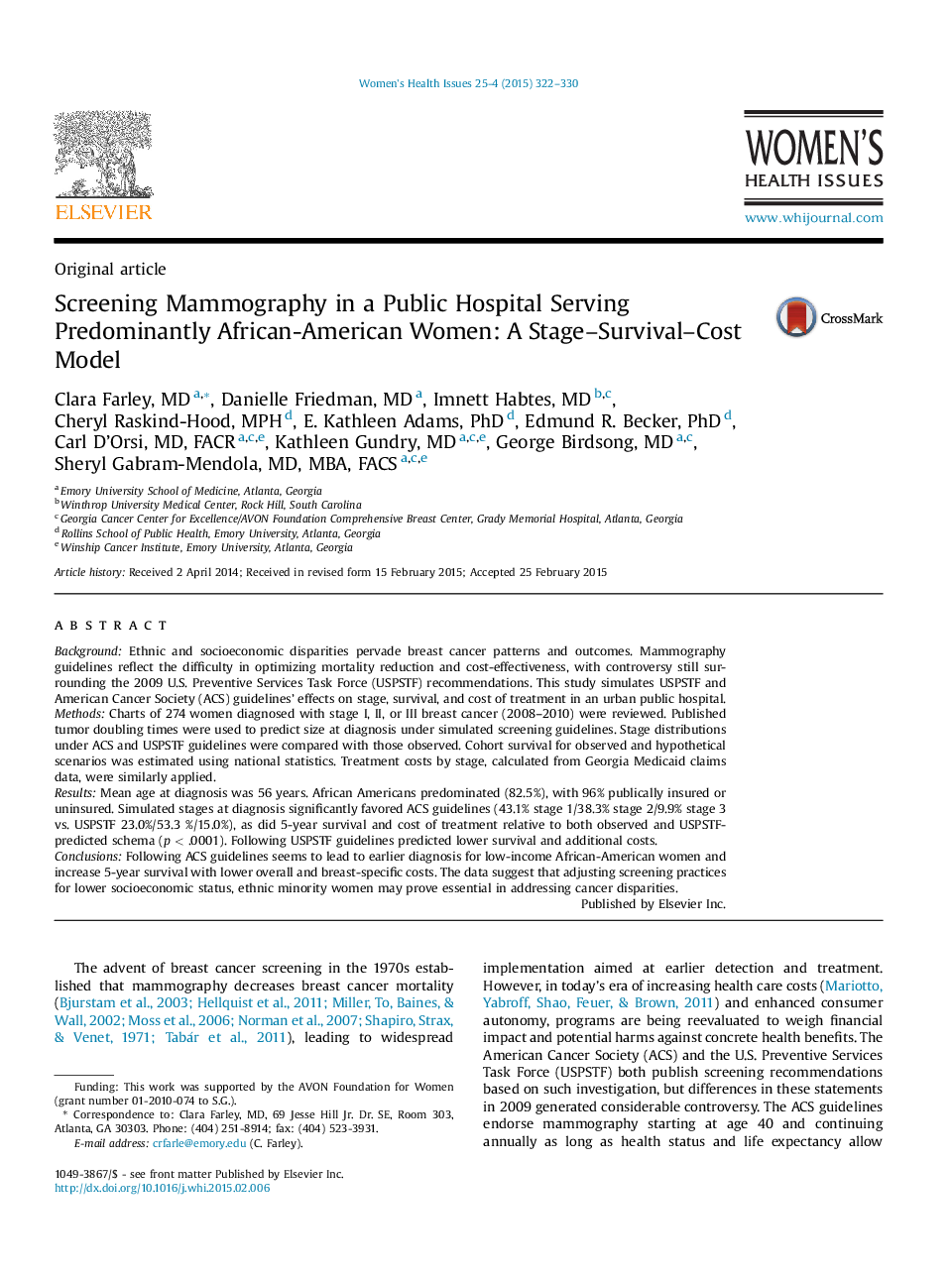| Article ID | Journal | Published Year | Pages | File Type |
|---|---|---|---|---|
| 1093100 | Women's Health Issues | 2015 | 9 Pages |
BackgroundEthnic and socioeconomic disparities pervade breast cancer patterns and outcomes. Mammography guidelines reflect the difficulty in optimizing mortality reduction and cost-effectiveness, with controversy still surrounding the 2009 U.S. Preventive Services Task Force (USPSTF) recommendations. This study simulates USPSTF and American Cancer Society (ACS) guidelines' effects on stage, survival, and cost of treatment in an urban public hospital.MethodsCharts of 274 women diagnosed with stage I, II, or III breast cancer (2008–2010) were reviewed. Published tumor doubling times were used to predict size at diagnosis under simulated screening guidelines. Stage distributions under ACS and USPSTF guidelines were compared with those observed. Cohort survival for observed and hypothetical scenarios was estimated using national statistics. Treatment costs by stage, calculated from Georgia Medicaid claims data, were similarly applied.ResultsMean age at diagnosis was 56 years. African Americans predominated (82.5%), with 96% publically insured or uninsured. Simulated stages at diagnosis significantly favored ACS guidelines (43.1% stage 1/38.3% stage 2/9.9% stage 3 vs. USPSTF 23.0%/53.3 %/15.0%), as did 5-year survival and cost of treatment relative to both observed and USPSTF-predicted schema (p < .0001). Following USPSTF guidelines predicted lower survival and additional costs.ConclusionsFollowing ACS guidelines seems to lead to earlier diagnosis for low-income African-American women and increase 5-year survival with lower overall and breast-specific costs. The data suggest that adjusting screening practices for lower socioeconomic status, ethnic minority women may prove essential in addressing cancer disparities.
